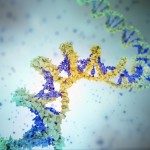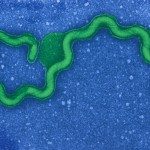Link to Pubmed [PMID] – 18270594
PLoS ONE 2008;3(2):e1607
Leptospira biflexa is a free-living saprophytic spirochete present in aquatic environments. We determined the genome sequence of L. biflexa, making it the first saprophytic Leptospira to be sequenced. The L. biflexa genome has 3,590 protein-coding genes distributed across three circular replicons: the major 3,604 chromosome, a smaller 278-kb replicon that also carries essential genes, and a third 74-kb replicon. Comparative sequence analysis provides evidence that L. biflexa is an excellent model for the study of Leptospira evolution; we conclude that 2052 genes (61%) represent a progenitor genome that existed before divergence of pathogenic and saprophytic Leptospira species. Comparisons of the L. biflexa genome with two pathogenic Leptospira species reveal several major findings. Nearly one-third of the L. biflexa genes are absent in pathogenic Leptospira. We suggest that once incorporated into the L. biflexa genome, laterally transferred DNA undergoes minimal rearrangement due to physical restrictions imposed by high gene density and limited presence of transposable elements. In contrast, the genomes of pathogenic Leptospira species undergo frequent rearrangements, often involving recombination between insertion sequences. Identification of genes common to the two pathogenic species, L. borgpetersenii and L. interrogans, but absent in L. biflexa, is consistent with a role for these genes in pathogenesis. Differences in environmental sensing capacities of L. biflexa, L. borgpetersenii, and L. interrogans suggest a model which postulates that loss of signal transduction functions in L. borgpetersenii has impaired its survival outside a mammalian host, whereas L. interrogans has retained environmental sensory functions that facilitate disease transmission through water.



